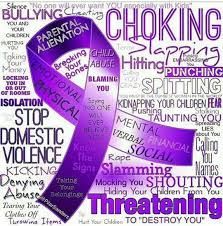What is Intimate Partner Violence

Understanding Intimate Partner Violence
Definitions and Terms
This abuse can be defined as… an intentional pattern of behavior used by an individual to gain and/or maintain power and control over an intimate partner that results in actual or perceived harm. The overall goal is to decrease the victim’s options. The behaviors can be physical, sexual, psychological, emotional, spiritual, or the destruction of property and pets. The combination of behaviors used is unique to each primary aggressor, but the goal is the same.
When we think of abuse, we tend to focus on the acts and tactics of abuse, however it is important to recognize the patterns of abuse. It is the patterns of abuse that truly define domestic violence and keep survivors powerless and voiceless. Domestic violence patterns have four major elements: seduction, mistreatment, oppression, and entrapment.
- Seduction is a promise that cannot be kept. It is an aggressive effort to give the survivor the illusion that she is special to the primary aggressor and will be treated specially. The false promise of a special relationship disguises boundary transgressions. The element of seduction is greatest at the beginning of a relationship of course, but will re-emerge whenever the survivor starts to pull away.
- Mistreatment is the one category that most people are aware of when talking about domestic violence. This is the behavior that is identified as illegal and brings moral sanctions. Yet without understanding it within the broader context of domestic violence patterns and the power of the abuser, it is often excused or rationalized.
- Oppression is taking away options and capacities for a person to respond to circumstances in the furtherance of her or his safety, sanity, integrity, health, growth and well-being. Oppression, unlike mistreatment, occurs not in episodes but over time; and so is often missed when single incidents (apart from the most severe) are examined.
- Entrapment covers all those factors such as children, fear, death threats, poverty, isolation, bonding, seduction, guilt, discouragement, family pressure, stalking, etc. which make it both realistically impossible to actually end the relationship (at least without outside help), but also impossible to re-negotiate the basis of the relationship in any way. Through entrapment, survivors are left trying just to withstand the abuse. All too often, survivors are blamed for their own entrapment.1
1 Michael Samsel, LMHC www.abuseandrelationships.org
Legally, Intimate Partner Violence is defined as:
"Family Violence" is defined in the Texas Family Code (Section 71.004) as:
(1) An act by a member of a family or household against another member of the family or household that is intended to result in physical harm, bodily injury, assault or sexual assault or that is a threat the reasonably places the member in fear of imminent physical harm, bodily injury, assault or sexual assault, but does not included defensive measures to protect oneself; (2) Abuse by a member of a family or household toward a child of the family or household; or (3) Dating violence as defined by Section 71.0021.
"Dating Violence" is defined in the Texas Family Code (Section 71.0021) as:
(a) "Dating violence" means an act by an individual that is against another individual with whom that person has or has had a dating relationship and that is intended to result in physical harm, bodily injury, assault or sexual assault or that is a threat that reasonably places the individual in fear of imminent physical harm, bodily injury, assault or sexual assault, but does not include defensive measures to protect oneself. (b) For the purposes of this title, "dating relationship" means a relationship between individuals who have or have had a continuing relationship of a romantic or intimate nature. The existence of such a relationship shall be determined based on consideration of: 1. the length of the relationship; 2. the nature of the relationship; and 3. the frequency and type of interaction between the persons involved in the relationship. (c) A casual acquaintanceship or ordinary fraternization in a business or social context does not constitute a "dating relationship" under Subsection (b).
Additionally, the Texas Council on Family Violence (TCFV) Defines "battering" as:
A pattern of coercive control that one person exercises over another. Battering is a behavior that physically harms, arouses fear, prevents a woman from doing what she wishes or forces her to behave in ways she does not want. Battering includes the use of physical and sexual violence, threats and intimidation, emotional abuse, and economic deprivation.